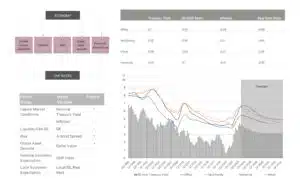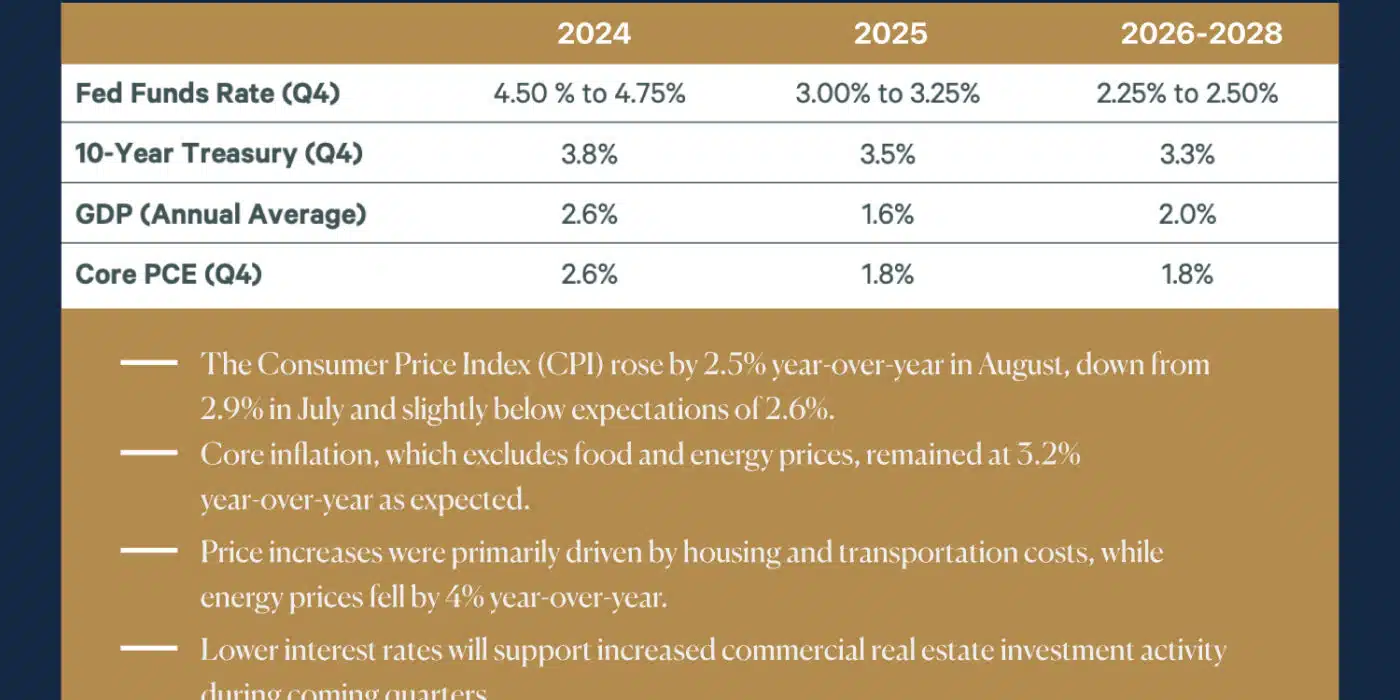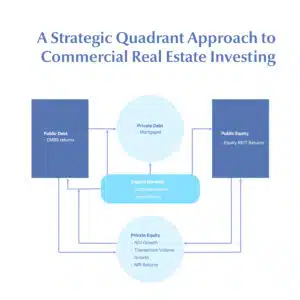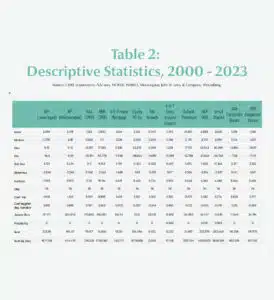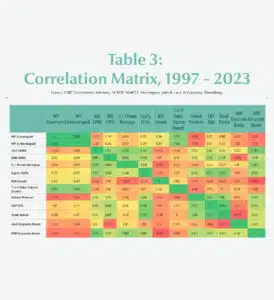A Stellar Year for Houston Industrial Real Estate: Key Insights and Analysis
In this analysis, we’ll break down the key highlights from Q4 2024, explore the factors driving Houston’s industrial market, and discuss what’s ahead for this thriving sector.
Key Highlights from Q4 2024
Strong Net Absorption and Reduced Vacancy Rates
- Houston’s industrial sector recorded 4.8 million square feet of positive net absorption in Q4 2024, contributing to a year-end total of 21 million square feet.
- Vacancy rates dropped by 60 basis points to 5.6%, aligning with historical averages and signaling a return to market stability.
- Availability rates also improved, falling to 7.4% due to robust tenant demand.
Construction and Deliveries
- The construction pipeline totaled 113 million square feet, with 28 projects underway. Approximately 24 million square feet were delivered in 2024, 70% of which was preleased.
- Notable deliveries included the Builders First Choice build-to-suit facility at Grand Central West Industrial Park, encompassing 842,600 square feet.
- Groundbreaking activity slowed, with just 1.5 million square feet added to the pipeline in Q4 due to rising costs and economic uncertainty.
Factors Driving Houston’s Industrial Market Growth
Strategic Location and Infrastructure
- Houston’s proximity to major ports and transportation hubs makes it a prime destination for companies reliant on global trade and logistics.
- The Port of Houston reported a stellar year, handling over 2.79 million TEUs by November, a 9% increase year-over-year. November alone saw a remarkable 24% year-over-year growth.
Tenant Demand and International Interest
- The market witnessed significant leasing activity from international companies, including tenants like Builders First Choice, Foxconn, and Avangard Innovative.
- Northwest Houston emerged as a hotspot, accounting for 2.7 million square feet of net absorption in Q4 alone.
Mega-Deals and Pent-Up Demand
- Large-scale leases, such as those exceeding 500,000 square feet, dominated the market, showcasing the growing trend of mega-builds.
- Several major deals are expected to close in early 2025, indicating strong pent-up demand.
Challenges in the Houston Industrial Market
Rising Costs and Economic Uncertainty
- Increased land and construction costs, coupled with economic uncertainties, have tempered new development activity.
- Securing preleased commitments has become a critical factor in project viability, as 70% of delivered space in 2024 was preleased.
Limited Materials and Labor Shortages
- The limited availability of construction materials and skilled labor continues to pose challenges, delaying project timelines and increasing costs.
What’s Ahead for the Houston Industrial Market?
Continued Growth in Tenant Demand
- With international and local companies seeking strategic hubs, Houston is poised to remain a top choice for industrial tenants.
- The trend of mega-builds is expected to gain further traction in 2025, driven by evolving logistics needs.
Focus on Sustainability
- Developers are increasingly incorporating sustainable practices into new projects, addressing tenant demands for energy-efficient facilities.
- Innovations in construction materials and technologies may help mitigate rising costs and labor shortages.
Frequently Asked Questions
Q. What contributed to Houston’s strong industrial market performance in 2024?
Ans. Several factors drove Houston’s success in 2024, including:
- Strategic location near ports and transportation hubs.
- Increased international tenant interest.
- Robust demand for large-scale facilities exceeding 500,000 square feet.
- A constrained construction pipeline, which limited supply and maintained demand.
Q. How did the Port of Houston influence the industrial market?
Ans. The Port of Houston played a pivotal role by handling over 2.79 million TEUs in 2024, a 9% year-over-year increase. This growth supported tenant demand for warehousing and logistics facilities near the port.
Q. What challenges are developers facing in Houston?
Ans. Developers are navigating:
- Rising land and construction costs.
- Limited availability of materials and skilled labor.
- Economic uncertainties impacting new project starts.
Q. What are the key trends to watch in 2025?
Ans. Key trends include:
- Increased activity in mega-build leases and large-scale developments.
- A continued focus on preleased commitments.
- Growing emphasis on sustainability and energy-efficient designs.
Q. Which submarkets are leading in growth?
Ans. Northwest Houston has emerged as a leader, with 2.7 million square feet of net absorption in Q4 2024 alone. This submarket’s strategic location and availability of large-scale facilities make it a prime choice for tenants.
Final Thoughts
The Houston industrial real estate market’s strong performance in 2024 reflects its resilience and strategic advantages. With robust tenant demand, reduced vacancy rates, and significant international interest, the market is well-positioned for continued growth. However, challenges such as rising costs and economic uncertainties will require careful navigation.
For investors and stakeholders, Houston’s industrial market remains a lucrative opportunity. Staying informed about evolving trends and submarket dynamics will be key to capitalizing on this vibrant sector.


